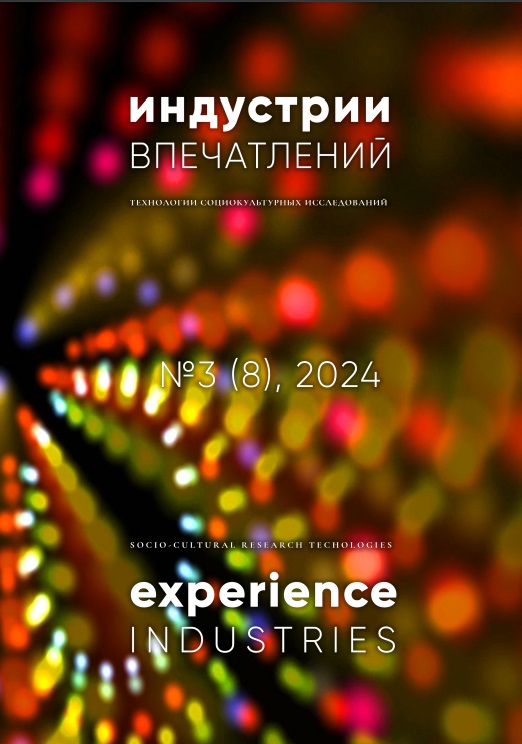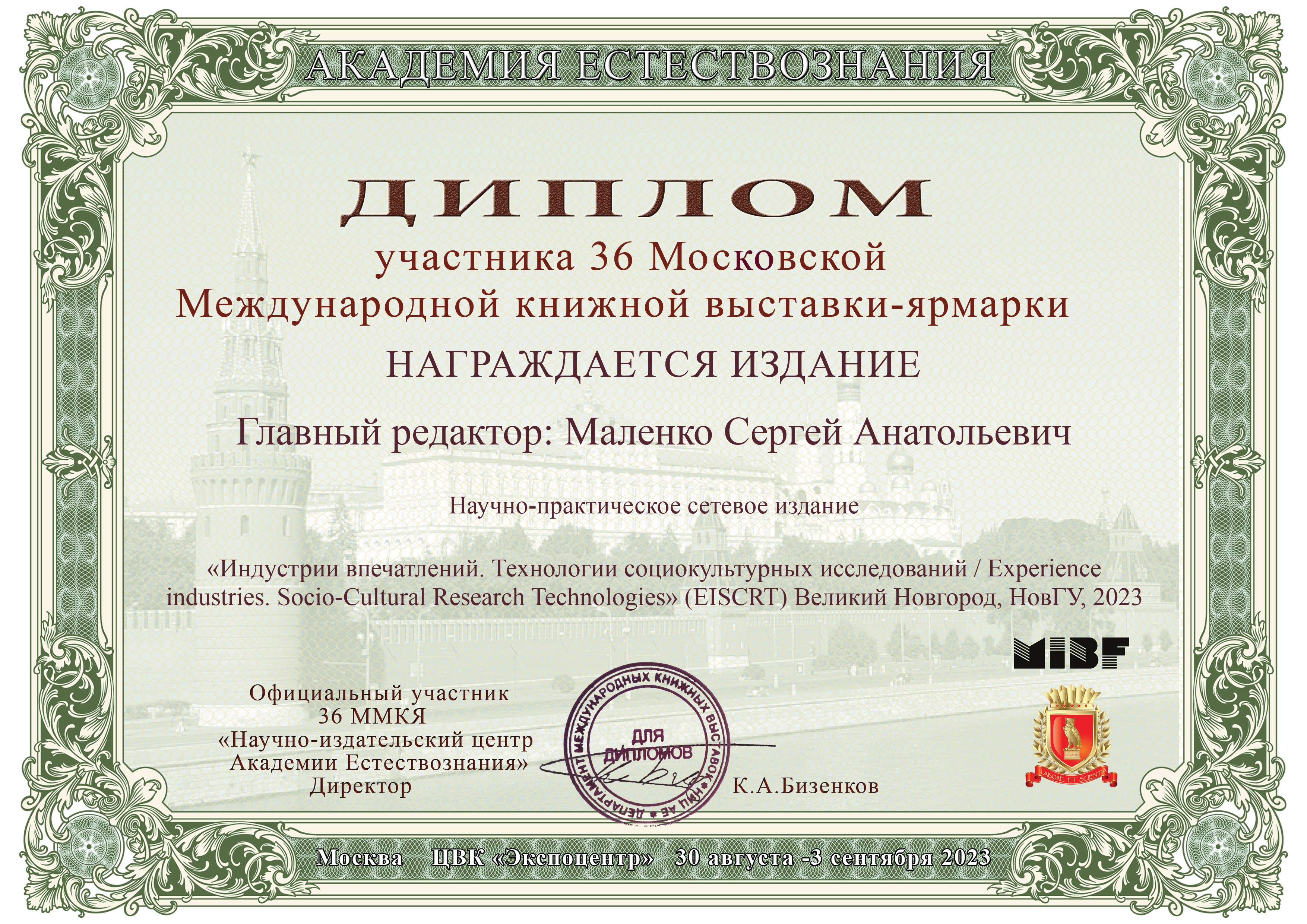УРБАНИСТИЧЕСКИЙ КАЛЕЙДОСКОП: МНОГООБРАЗИЕ ОБРАЗОВ ЛУГАНСКОГО КРАЯ В ТВОРЧЕСТВЕ М. М. МАТУСОВСКОГО И СОВЕТСКОМ КИНО
DOI:
https://doi.org/10.34680/EISCRT-2024-3(8)-302-340Ключевые слова:
экранная культура, символ, городская среда, образ, мифологема, культурный контекст, художественный прием, городской ландшафт, индивидуализация образа, культурная модельАннотация
Объектом исследования избран образ Луганского края как зеркало эпохи, в котором отражены социальные и культурные изменения. Предметом для анализа послужила лирика советского поэта-песенника М. М. Матусовского и культовое советское кино, в котором ярко представлены урбанистические пейзажи луганского региона, его архитектура, повседневная жизнь людей и ведущие противоречия времени. В качестве методов исследования выбраны семиотический, социокультурный подходы, сравнительно-исторический и контент-анализ. Установлено, что при создании образа Луганщины в советских кинофильмах «Молодая гвардия», «Свет в окне», использованы символы возрождения, трудолюбия, веры в будущее, подвиги героев и тружеников. В более поздних кинолентах «Антрацит» и «Зеркало для героя» наблюдается переосмысление советского прошлого и фиксация кризиса общественной морали. Философия художественного образа, сконструированного на архетипах поиска, любви, верности, бунта, раскрывается через мифопоэтические символы, мифологемы «технического края» и «индустриального края», а также характер главных героев. Исследование показало, что кино как художественно-эстетический и социокультурный продукт творчества в полной мере раскрывает визуальный портрет Луганского края, создает эмоциональный накал и воспроизводит стремительную динамику времени, подчеркнутую меняющимися городскими ландшафтами послевоенного восстановления страны.
Для цитирования статьи:
Серостанова, О. Б. (2024). Урбанистический калейдоскоп: многообразие образов Луганского края в творчестве М. М. Матусовского и советском кино. Индустрии впечатлений. Технологии социокультурных исследований (EISCRT), 3 (8), 302-340. https://doi.org/10.34680/EISCRT-2024-3(8)-302-340








